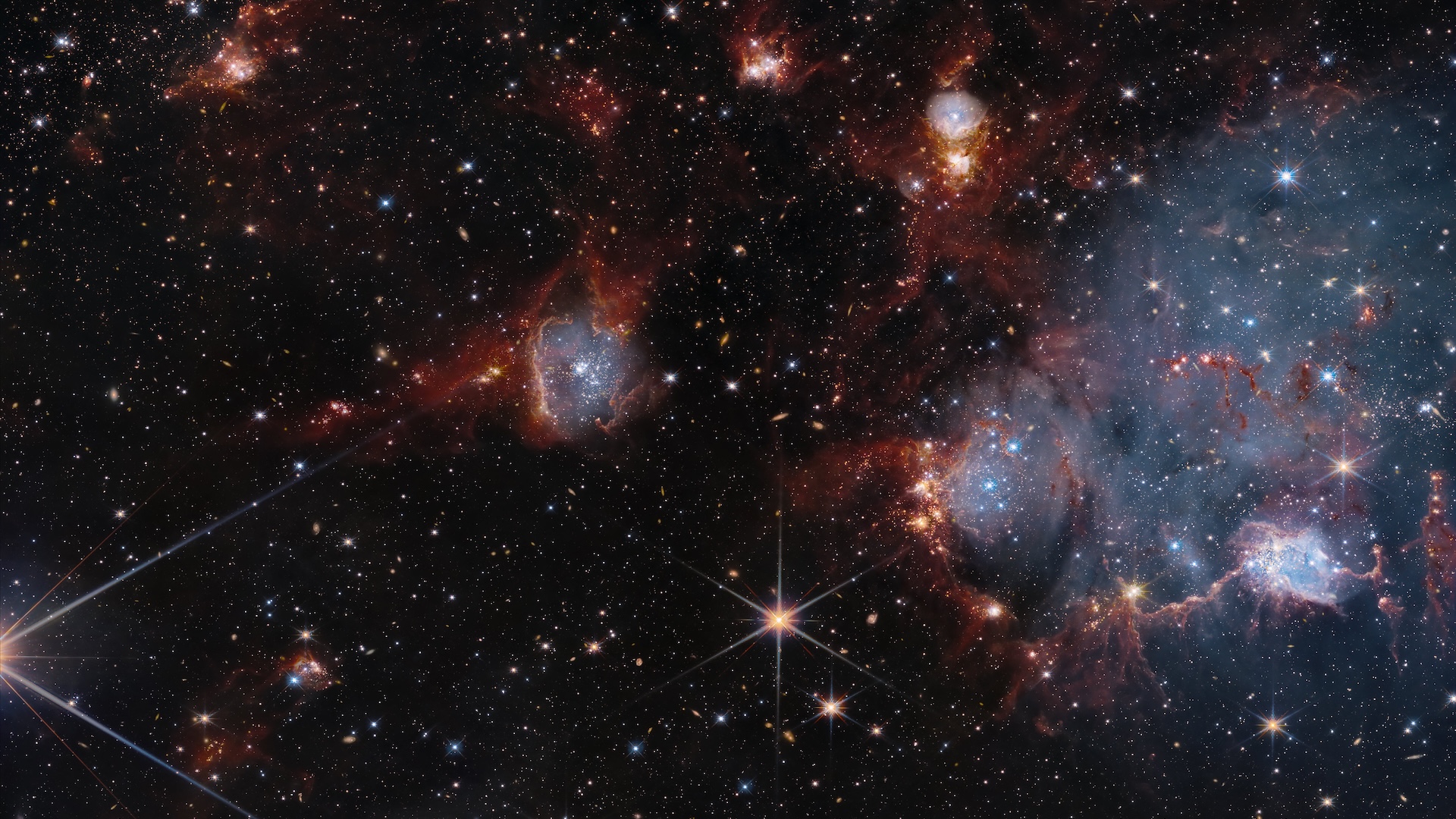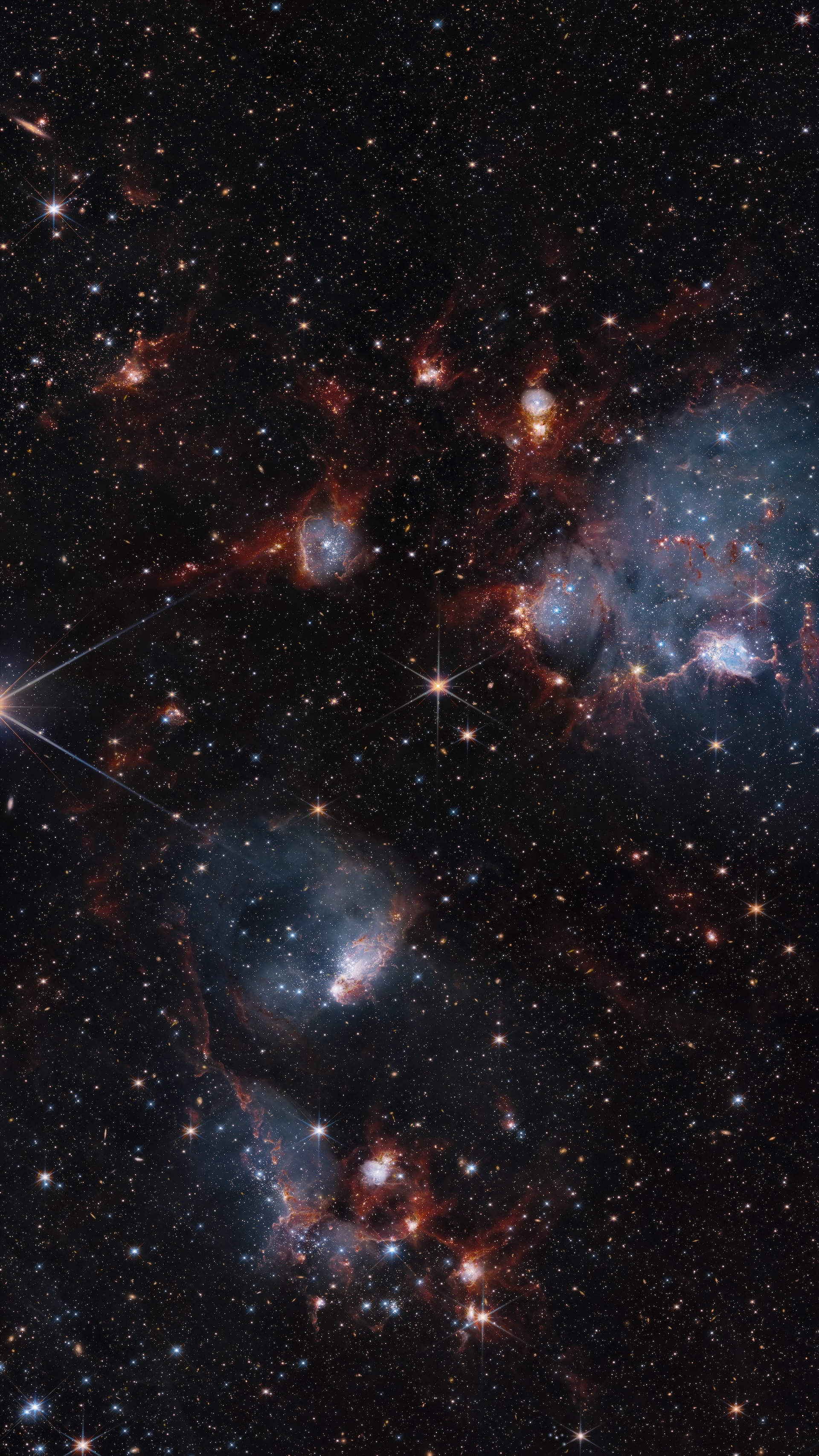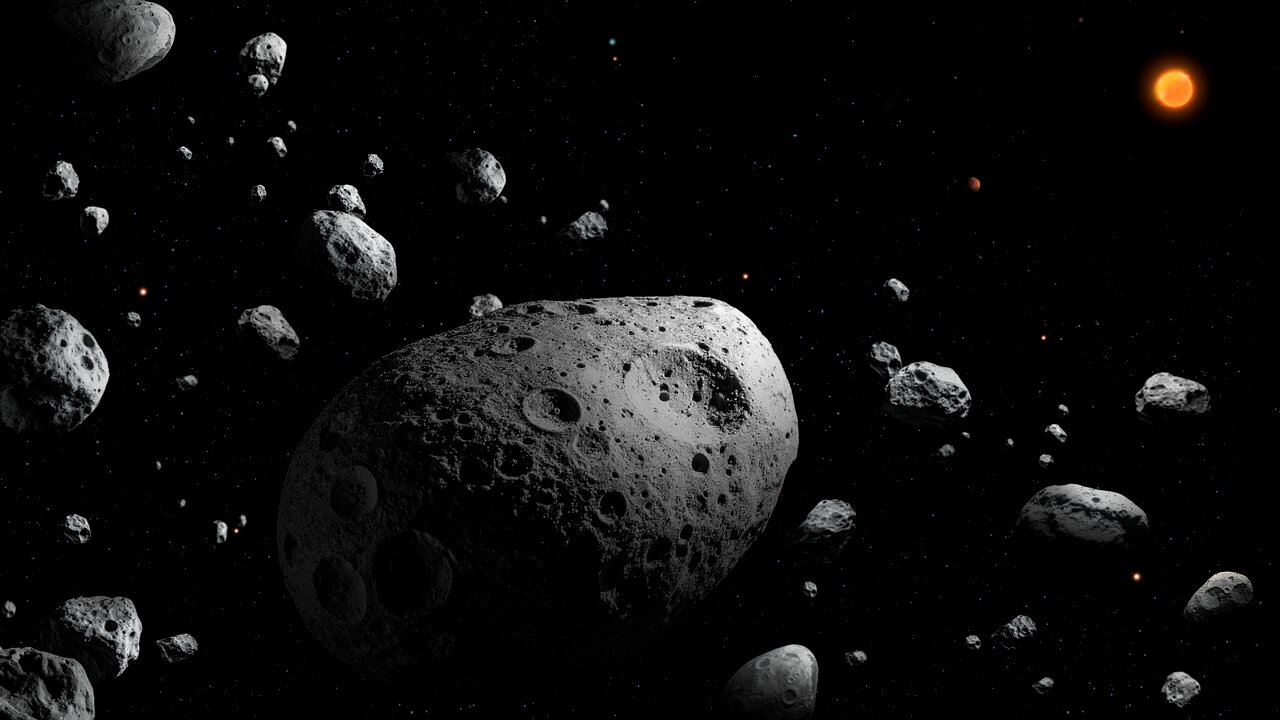James Webb and Hubble telescopes join forces to explore a cosmic nursery: Space photo of the week
The mighty James Webb and Hubble space telescopes united to reveal stars being born inside the Small Magellanic Cloud, which orbits the Milky Way.

What it is: The open star clusters NGC 460 and NGC 456
Where it is: 200,000 light-years away, in the Small Magellanic Cloud dwarf galaxy
When it was shared: July 7, 2025
NASA's Hubble Space Telescope and James Webb Space Telescope (JWST) joined forces to capture a striking new view of two open star clusters within the Small Magellanic Cloud, a dwarf satellite galaxy orbiting the Milky Way.
The spectacular 527-megapixel image is the result of 12 overlapping observations in visible light (by Hubble) and infrared light (by JWST). It shows two open clusters, called NGC 460 and NGC 456, which are home to thousands of stars in various stages of development. An 87-megapixel version of the image can be downloaded from NASA.
Star clusters are groups of stars that share an origin, form at roughly the same time and location, and are held loosely together by gravity. The stars in NGC 460 and NGC 456 are no more than 10 million years old — a stark contrast to the sun's 4.5 billion years of age.
Featuring bluish clouds of gas full of young stars and red filaments of dust, the image reveals the process by which stars are formed. As new stars grow within clouds of gas, they expel radiation or collapse, triggering further star formation. Hubble captured, in the visible and near-infrared spectra, the glowing, ionized gas shaped by radiation from stars — the bluish "bubbles" in the image.
Meanwhile, JWST observed the same regions in infrared light, revealing the red dust lanes glowing as they absorb starlight. JWST cannot directly see ionized gas bubbles, and Hubble doesn't detect dust — it sees only dark silhouettes — so the collaboration is ideal.

Astronomers study the Small Magellanic Cloud because it lacks the heavier elements found in large galaxies such as the Milky Way. It therefore replicates what more primitive galaxies were like in the early universe.
NGC 460 and NGC 456 are part of the N83-84-85 complex, a nursery of massive stars. It's home to rare, extremely massive O-type stars, only perhaps 20,000 of which exist in the Milky Way.
Get the world’s most fascinating discoveries delivered straight to your inbox.
For more sublime space images, check out our Space Photo of the Week archives.

Jamie Carter is a freelance journalist and regular Live Science contributor based in Cardiff, U.K. He is the author of A Stargazing Program For Beginners and lectures on astronomy and the natural world. Jamie regularly writes for Space.com, TechRadar.com, Forbes Science, BBC Wildlife magazine and Scientific American, and many others. He edits WhenIsTheNextEclipse.com.
You must confirm your public display name before commenting
Please logout and then login again, you will then be prompted to enter your display name.


